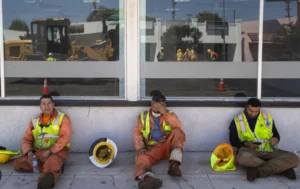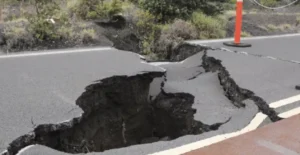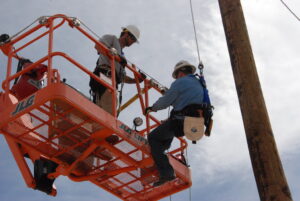
As a business operating in California, ensuring a safe work environment and compliance with safety regulations is vital. Regular safety inspections by regulatory agencies, such as Cal/OSHA, help identify potential hazards and ensure adherence to safety standards. We will guide you through what to expect when navigating California’s safety inspection process. By being prepared and proactive, you can confidently address safety concerns and maintain compliance:
1.-Notification and Scheduling:
Typically, safety inspections are unannounced, emphasizing the need for ongoing readiness. However, some inspections may be scheduled in advance. It’s crucial to be prepared at all times by having robust safety protocols, training programs, and documentation in place.
2.- Introduction and Explanation:
When an inspector arrives, they will introduce themselves and provide an overview of the inspection process. They will explain the purpose of the inspection, which is to identify potential hazards and ensure compliance with safety regulations. Use this opportunity to ask questions and clarify any doubts about the process.
3.-Scope and Documentation.
The inspector will outline the scope of the inspection, specifying which areas, equipment, and processes will be assessed. They may request various documents, such as safety policies, training records, incident reports, and maintenance logs. Having organized and up-to-date documentation readily available will facilitate the inspection process.
4.- Walkthrough and Observation.
The inspector will conduct a walkthrough of the premises, observing work practices, equipment usage, and overall safety measures. They may take notes, photographs, or videos as evidence. During this phase, it’s important to remain cooperative and answer any questions the inspector may have. Engaging in open dialogue can help build a positive rapport.
5.- Employee Interviews.
Inspectors often conduct interviews with employees to gain insights into their knowledge of safety procedures and potential concerns. Employees should be informed about the purpose of the interviews and encouraged to provide honest and accurate information. Ensuring a culture of open communication can help identify areas for improvement.
6.- Hazard Identification.
The inspector will assess the workplace for potential hazards, such as improper storage of chemicals, lack of proper signage, or inadequate machine guarding. They will identify any violations of safety regulations and note them for further review and discussion.
7.- Violations and Corrective Actions.
If violations are identified, the inspector will discuss them with management. They may explain the specific regulations that have been violated and provide recommendations for corrective actions. It’s essential to address these violations promptly and develop a plan to rectify them to maintain compliance.
8.- Closing Meeting and Inspection Report.
At the conclusion of the inspection, the inspector will hold a closing meeting to discuss their findings. They may provide immediate feedback and recommendations for improvement. After the inspection, the business will receive an official inspection report detailing the findings, violations, and any required corrective actions.
9.- Follow-Up and Compliance.
If violations are found, the business is responsible for taking appropriate corrective actions within the given timeline. Inspectors may conduct follow-up visits to ensure compliance with the recommended changes. It’s crucial to document the implemented corrective actions and maintain an ongoing commitment to safety improvement.
Navigating California’s safety inspection process requires preparation, compliance, and a proactive approach to ensure a safe work environment. By familiarizing yourself with regulations, conducting internal audits, maintaining accurate documentation, and prioritizing employee training, you can confidently navigate inspections. At Reliance Safety Consultants, we offer audit services to assist businesses in achieving compliance and minimizing risks during safety inspections.
If your business has received citations or penalties from Cal-OSHA, our appeal services have a track record of high-rate success. Our experts understand the appeal process intricately and will meticulously gather evidence, prepare documentation, and present a compelling case on your behalf. Our goal is to help your business navigate the appeal process effectively and achieve the best possible outcome.
Our team is here to support you in maintaining a culture of safety and ensuring the well-being of your workforce:

Indoor Heat Safety: Compliance and Prevention in California Workplaces
In a proactive move towards ensuring workplace safety, the California Occupational Safety and Health Standards Board has introduced a new regulation, Section 3396, under Title

Protecting Outdoor Workers from Heat Illness in California
As temperatures soar in California, outdoor workers face increased risks of heat illness. Cal/OSHA’s recent reminder underscores the importance of employers taking proactive measures to

Safeguarding Your Business: The Importance of Compliance with Cal/OSHA Regulations
In the bustling streets of San Francisco, tragedy struck on September 28, 2023, when a routine construction project turned fatal. D’Arcy & Harty Construction, Inc.,



